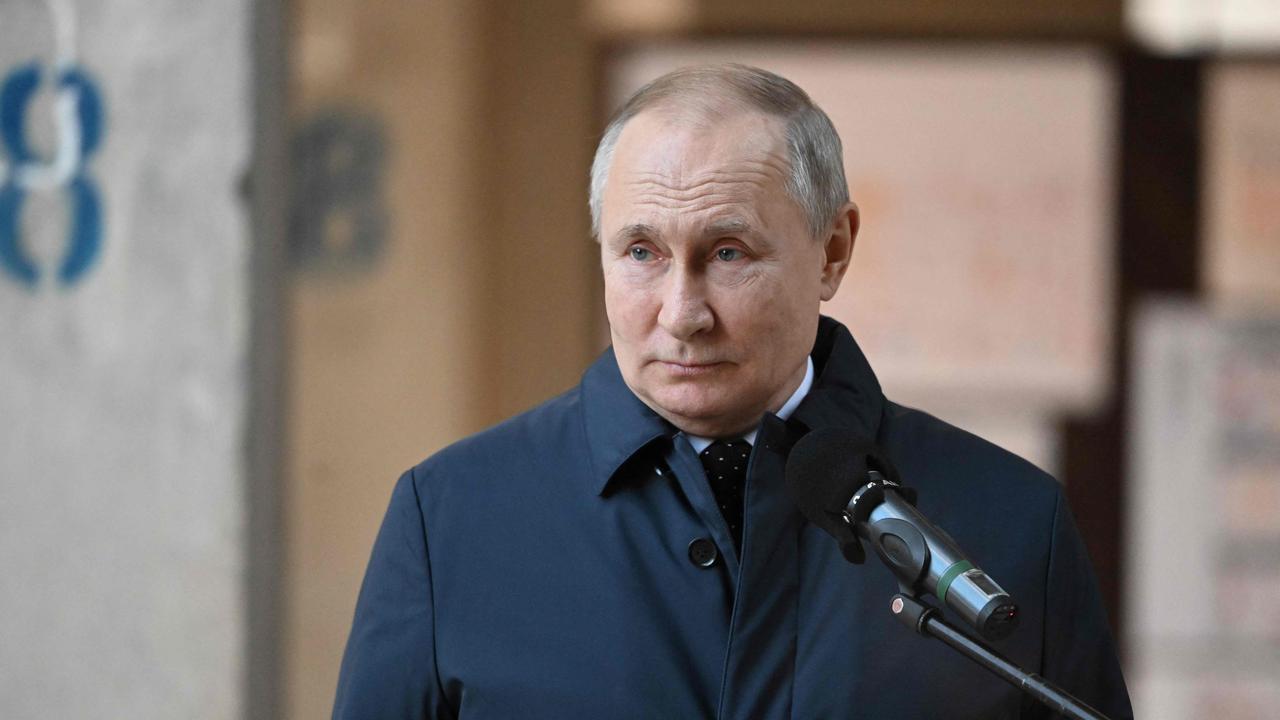Putin’s defence boss ‘clearly uncomfortable’ with nuclear threat, experts say
Russia’s Defence Minister appeared ‘clearly uncomfortable’ as Putin issued a threat of nuclear warfare in his quest to invade Ukraine, experts say.
Russian President Vladimir Putin has put the world on notice he is prepared to deploy nuclear force, prompting a swift offer of talks to de-escalate the war in Ukraine.
As he fights back over western sanctions and urban warfare resistance, President Putin issued the televised threat shortly after midnight Australian time.
“Western countries aren’t only taking unfriendly economic actions against our country, but leaders of major NATO countries are making aggressive statements about our country. So I order to move Russia’s deterrence forces to a special regime of duty,’’ he said.
Security experts suggested overnight that his Defence Secretary Sergey Shoigu looked “clearly uncomfortable” with the nuclear threat during the briefing.
Shortly after the threat was issued, Ukrainian officials confirmed for the first time that they would meet with their Russian counterparts at the Belarus border to try and de-escalate the crisis.
Stream the latest news on the escalating tensions between Russia and Ukraine live & on demand on Flash. 25+ news channels in 1 place. New to Flash? Try 1 month free. Offer ends 31 October, 2022 >
Putin: "Western countries aren't only taking unfriendly economic actions against our country, but leaders of major Nato countries are making aggressive statements about our country. So I order to move Russia's deterrence forces to a special regime of duty." pic.twitter.com/AC1yHncqZc
— max seddon (@maxseddon) February 27, 2022
Ukrainian President Volodymyr Zelensky said the Ukrainians would meet the Russians “without preconditions.”
President Zelensky has previously rejected a Russian offer to meet in Belarus earlier in the day.
He said Belarus had given an undertaking that all planes, helicopters and missiles would remain on the ground during the Ukrainian delegation’s visit.
The parties will meet on the Pripyat river on the Belarusian border.
Russian nuclear expert Pavel Podvig said the chilling threat to place Russia’s deterrence system – which includes nuclear weapons – on “a special regime of duty” was a disturbing development.
“Yes, it was a very explicit nuclear threat: “the consequences will be such as you have never seen in your entire history,’’ he said.
“This all makes me nervous. The Kremlin has no good off-ramps at this point and is looking at an existential threat to the current state.”

The nuclear threat follows similar language deployed by President Putin on Thursday in a speech announcing the invasion would commence.
Announcing a “special military operation”, he issued a stark warning against Western intervention over “consequences.”
“No matter who tries to stand in our way or, all the more so, create threats for our country and our people, they must know that Russia will respond immediately, and the consequences will be such as you have never seen in your entire history” he said.
Later in the speech, President Putin was more explicit, falsely claiming that Ukraine was on a path to build its own nuclear arsenal and stressing Russia’s own capabilities.
“Today’s Russia remains one of the most powerful nuclear states,” Putin said.


The remarks were immediately interpreted as a veiled threat of nuclear retaliation if Ukraine resists Russia’s invasion.
Russia has an estimated 6,000 nuclear weapons, the world’s largest nuclear arsenal. The United States has about 5,500 nuclear warheads.
Each arsenal is large enough to kill billions of people — but has traditionally served as a deterrent against attack, rather than a serious proposition to deploy.
Other countries that have nuclear capabilities include China, France, the UK, Pakistan, India, Israel, and North Korea.
But until now experts have believed it was highly unlikely President Putin would threaten to go further, because of the expectation that Ukraine would capitulate quickly.
The Russian invasion has relied on conventional weapons to date – tanks, aircraft bombers and navy ships.
But its arsenal includes a powerful non-nuclear 44 ton TNT bomb that has the capacity to cause widespread damage in a 300-kilometre radius.
Experts also suggested last night that the threat of using nuclear weapons was consistent with Russian military doctrine.
President Donald Trump previously threatened North Korean leader Kim Jong-un with “fire and fury” in 2017, but those remarks were regarded as more sabre-rattling that a serious threat to deploy nuclear weapons.




